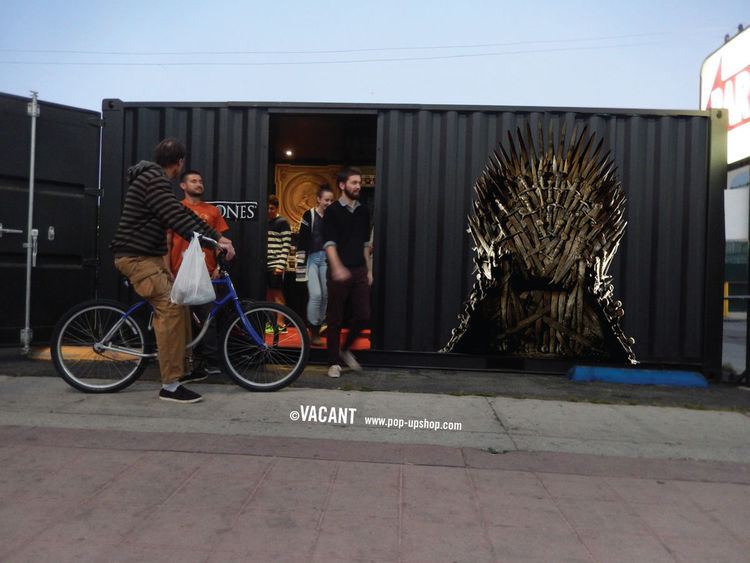 | ||
Pop-up retail, also known as pop-up store (pop-up shop in the UK, Australia and Ireland) or flash retailing, is a trend of opening short-term sales spaces that started in Los Angeles and now pop up all over the United States, Canada, China, Japan, Mexico, France, Germany, the United Kingdom and Australia.
Contents
History
The Ritual Expo was one of the first iterations of the pop-up retail store. Not yet referred to as pop-up retail, the 1997 Los Angeles event was created by Patrick Courrielche and was later branded as a one-day "ultimate hipster mall.” The event quickly caught the eye of large brands that saw the potential of creating short-term experiences to promote their products to target audiences. AT&T, Levi-Strauss, and Motorola worked with Courrielche to create pop-up shopping experiences across the country to market their products to young audiences.
In November 2002, discount retailer Target took over a 220-foot-long boat at Chelsea Piers for a two-week stay on the Hudson River that coincided with Black Friday. Vacant, a Los Angeles, California based business specializing in pop-ups, arrived in New York in February 2003, working with Dr. Martens on a pop-up space at 43 Mercer Street.
Song Airlines opened a pop-up shop in New York City in 2003. Comme des Garçons opened, for one year, a pop-up shop in 2004 with the 'Guerrilla Shop' tag. Trendwatching.com claims to have coined the term "Pop-Up Retail" in January 2004. In November 2013, Samsung opened a pop-up shop in New York City's Soho area that worked as a brand experience space. The temporary pop-up space was extended and eventually became a permanent retail space. In July 2015 Fourth Element opened the world's first underwater pop-up shop at a depth of 6 metres / 19 feet TEKCamp.2015.
Other brands that have developed pop-up shops as part of their campaigns include Kate Spade, Gucci, Louis Vuitton and Colette.
Pop-up Retail began extending into other genres around 2009, when the Pop-up restaurant - temporary restaurants popping up in various locations - began growing in public interest and frequency.
The trend is also widespread in the UK, where landlords have used the trend to fill vacant space.
Newbury Street in Boston has recently become a hotbed for pop-up retail, hosting temporary storefronts for Martellus Bennett, Cotton, Kanye West and other local brands.
Concept
A pop-up retail space is a venue that is temporary: the space could be a sample sale one day and host a private cocktail party the next evening. The trend involves "popping up" one day, then disappearing anywhere from one day to several weeks later. These shops, while small and temporary, are used by companies to build interest in their product or service, and seed their product with cultural influencers. Pop-up retail allows a company to create a unique environment that engages their customers and generates a feeling of relevance and interactivity. They are often used by marketers for seasonal items such as Halloween costumes and decorations, Christmas gifts and Christmas trees, or fireworks.
There are various benefits to pop-ups such as marketing, testing products, locations, or markets, and as a low-cost way to start a business. Some pop-up shops, such as Ricky's and other Halloween stores, are seasonal, allowing brands to capture foot traffic without committing to a long-term lease. Other brands use pop-ups to create engagement, such as Marc Jacobs Tweet Shop's exchange of "social currency" for free product and King and McGaw who used a pop-up to exhibit and sell prints from the Mourlot Studios in Soho, London.
